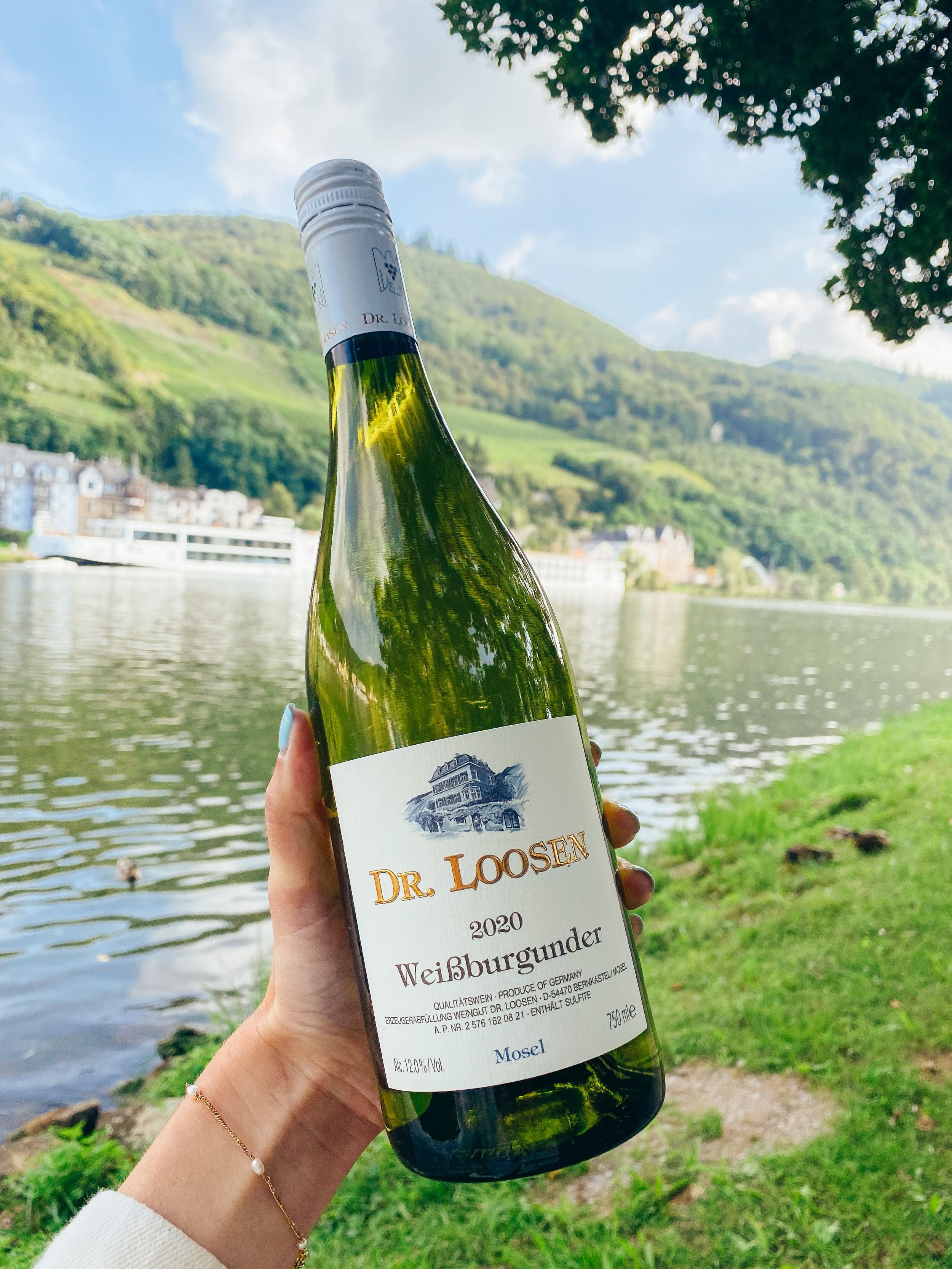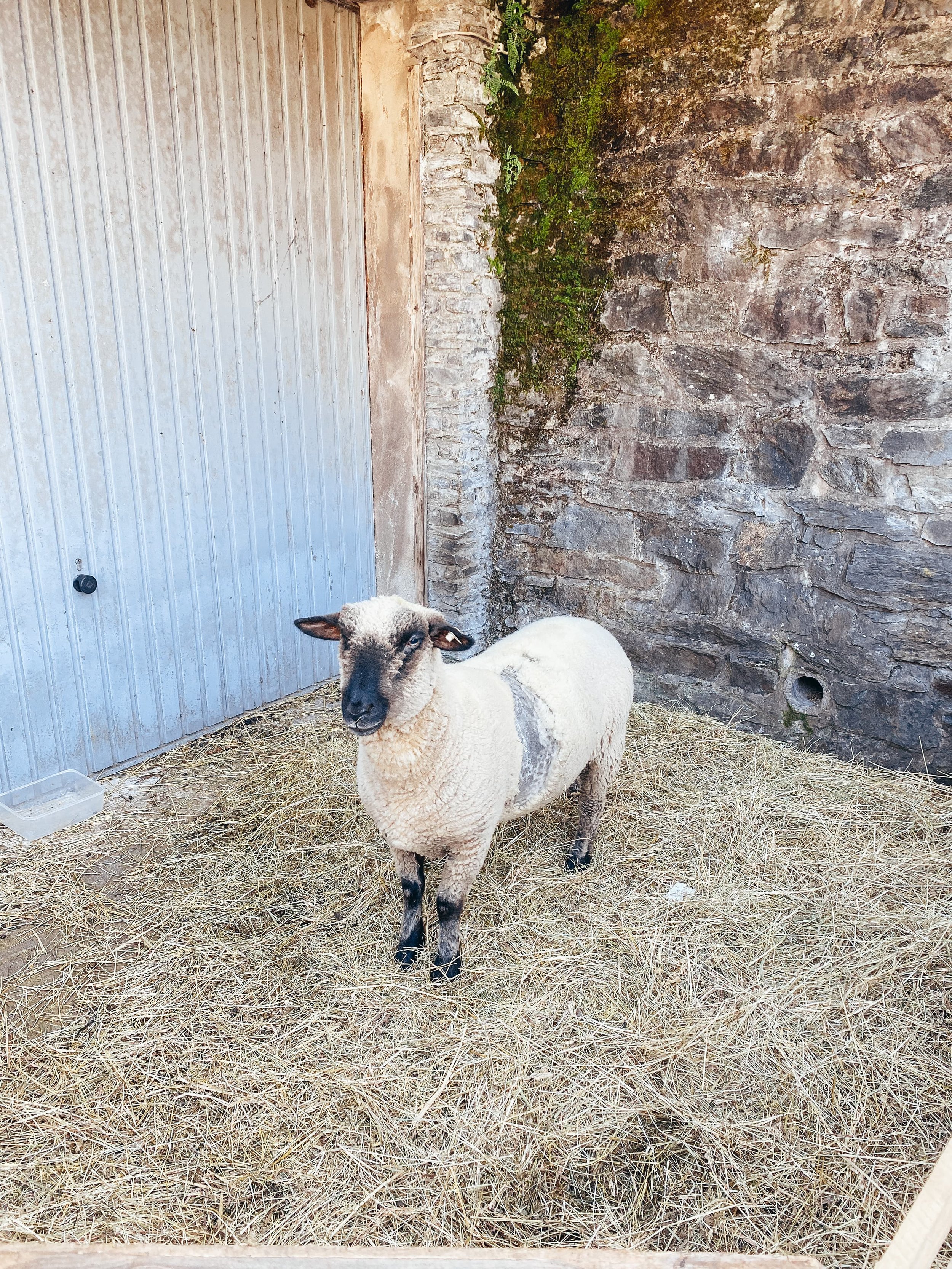4 Must Visit Wineries in the Mosel Valley (Moselle Valley) of Germany
After scrolling through these photos, you might just have to agree with me that the Mosel Valley, aka the Moselle Valley, is one of the most beautiful wine regions in the world.
Located in southwestern Germany, the Mosel has so much more to offer than sweeping vineyard views. The wines produced here are considered to be the best of Germany and some of the top white wines globally.
Home to the world’s steepest vineyards, the Mosel Valley has a history of winemaking that dates back to the Romans in the second century. This region was originally named the Mosel-Saar-Ruwer, after the main river and its two tributaries. The name has now been shortened to Mosel for simplicity, though it can still be viewed as three subregions.
The Saar and Ruwer are significantly smaller than the Middle Mosel, given these are just tributaries, or smaller rivers flowing into the main one. When comparing the different styles of wine produced from each of these subregions, the variances can be attributed to the individual microclimates.
This guide includes at least one winery from each of the three subregions in the Mosel Valley. If you’re planning a trip to this iconic German wine region, I highly encourage you to hit all three subregions and compare the different styles of Riesling. Note: It’s easy to visit the Ruwer and Saar regions in one day, as they’re located right next to each other.
4 Must Visit Wineries in the Mosel Valley (Moselle Valley) of Germany
Over 60% of wine produced in the Mosel Valley is made from Riesling - a variety some sommeliers (myself included) would consider to be the king/queen of all grapes. Riesling is a unique variety for so many reasons, but arguably the most iconic is its ability to age. As Riesling develops, it takes on a characteristic note of petrol, complemented by delicious honeyed flavors. An aged Riesling is truly unlike any other wine you’ve tasted, but the younger styles can be just as impressive.
Riesling is also special because it’s one of the few grapes that can make such a range of styles - from extremely sweet to bone dry - and taste just as spectacular. Before this trip, you’d have caught me asking for dry Riesling only, but now I’m a sucker for the halbtrocken, auslese, or anything that has a bit of residual sugar (the more, the merrier).
The truth is, the Germans (like most Europeans) don’t export much of the good stuff, so you might just have to plan a trip to this stunning wine region to absolutely fall in love with Riesling. Bummer.
To get to the Mosel Valley, you’ll fly into the Frankfurt airport and rent a car to then drive about 1.5 hours to the Mosel. I’d suggest staying somewhere in the Middle Mosel, like Bernkastel-Kues, as it's centrally located and has plenty of accommodations, restaurants, and wineries to visit.
Note that when visiting Germany from the United States, you won’t be able to ship wine home like you can from some other European countries. Be prepared by leaving empty space in your suitcase, bringing these wine skins (my favorite option), or toting a wine suitcase with you.
Here are four must visit wineries in Germany’s Mosel Valley, along with what to expect from each unique experience. Be sure to save this post for your next trip to Germany’s stunning wine country!
1.Weingut dr. loosen
A true icon of German wine, Dr. Loosen is a name to be recognized around the world. The winery is located in the Middle Mosel, within the quaint town of Bernkastel-Kues.
Views from Weingut Dr. Loosen’s courtyard
Set up a tasting appointment at the winery and they’ll walk you through at least half a dozen different Rieslings (mostly dry). You’ll also get a taste of their Weissburgunder (Pinot Blanc), which was my personal favorite.
You’ll learn about the varying soils in the surrounding area and how blue slate and red slate truly express themselves differently in the resultant wines. The terroir is almost tangible when you do a side-by-side of these dry Rieslings from different vineyard sites around the Mosel.
This is a great winery to visit to get familiar with the classic style of Mosel wines.
2.Weingut Rita & Rudolf Trossen
Located in the village of Kinheim-Kindel in the Middle Mosel, Weingut Rita & Rudolf Trossen is truly a special experience.
This is not your typical wine tasting experience, especially if you’re used to wine tasting in the United States. I would recommend this winery if you are dedicated to learning about the region and winemaking, but if you want a more traditional “winery” experience, stick to the others on this list.
That said, if you are ready to nerd out a bit and have a desire to spend some time with a winemaker (and you plan to purchase bottles to take home), this experience must not be missed.
You’ll roll up to Rita and Rudolf’s place (yes, their actual home) and wonder if you’re at the right spot. Just across the river from steep vineyards, is a humble home, decorated with beautiful gardens.
Views from across the river when tasting at Weingut Rudolf and Rita Trossen. Each plot you see is likely owned by a different winemaker or winegrowing family.
You’ll sit outside, facing the incredible view, of course, and wait for Rudolf to bring an array of different wines (all Riesling) for you to taste. Some might not even have labels yet - we tasted a few that were bottled just hours before.
Believe me when I say these will be some of the best wines you’ll taste on your trip to the Mosel Valley (and maybe ever). Rudolf’s approach to winemaking is natural - nothing added, nothing taken away (some of his wines don’t even have added sulfites). And this practice starts in the vineyards with biodynamic farming.
Once Rudolf warms up to you and sees you are serious about wine, he’ll get to talking and sharing his stories. He’s quite the character (in the best way), so buckle in.
The experience is more like drinking wine with an old friend. You’ll likely spend a few hours with Rudolf and if you’re lucky, Rita might stop by to say hi. Maybe the neighbors (their children and grandchildren) or close friends will join, as well.
That said, be sure to purchase some bottles to take with you. You’ll be shocked at the prices - it might be the best wine you’ve ever had for under 10 euros, or so. Take as many bottles as you can, not only to support this small, family-operated business, but also because these wines are barely (if at all) exported. One of my favorites was a Riesling that had savory notes reminiscent of a sour cream and onion flavored chip - I told you, this experience is for the wine nerds.
Some of the wines we enjoyed with Rudolf. The labels are painted by a friend of the Trossens.
The Trossens don’t take reservations online per se, so if you’d like to visit, you’ll have to send them an email directly to set up your appointment.
Send Rudolf an email to set up a tasting appointment.
3.Van Volxem
Located near the Saar tributary, Van Volxem is worth a trip to see the sweeping views and new state of the art winery.
You’ll be greeted with bubbly (sekt) before joining a guided tour of the grounds, where you’ll get to see the underground cellar with impressive stainless steel tanks, take a look at the vineyards, and learn about the history of the Saar subregion and what makes this area so important.
In fact, you’ll also see the hills where the most expensive white wine in the world hails from, coming in at a whopping 15,000 euros for just one bottle.
The tasting includes a flight of Riesling, ranging in style from dry to off-dry to sweet, along with some light bites, while enjoying the sweeping, lusciously green views.
4.Dominikaner Weingut C. von Nell-Breuning
Located in the tiny village of Kasel around the Ruwer tributary, the Von-Nell Breuning family has been making wine for over 350 years.
The Von-Nell Breuning winery, cellar, and home that was built over 100 years ago.
Carmen Von-Nell Breuning took over the winery from her father and is currently running all operations. She gave us a tour of her underground winery and cellar, located just beneath her home that was built over 100 years ago.
Carmen farms biodynamically (a change she initiated after taking over the winery) and uses sheep to help till the steep hillside vineyards. If you’re lucky, you’ll even be acquainted with one of these cute vineyard workers.
Sitting on the patio across from Carmen’s house and just outside her family restaurant, you’ll stare up at the steep vineyards across the road and wonder how grapes can be harvested from these impressive slopes.
Machinery? Nope. Carmen climbs up the hills to harvest the grapes from her vineyards which slope at around 75 degree angles. If that’s not a dedication of blood, sweat, and tears, I’m not sure what is. Don’t let her sweet demeanor fool you, Carmen is a badass.
Carmen’s biodynamic wines were some of my favorites from the trip. Her sekt (sparkling wine) had a distinct and sharp acidity - a product of the Ruwer’s cooler microclimate - that made me want to stock up and pair it with all the fried foods (my mouth is watering just thinking of it now).
This is another place where you’ll want to stock up on bottles to take home.
Visit the website to set up a tasting appointment. Be sure to tell Carmen I sent you!
Whether German wine country has been on your bucket list or not, I highly encourage you to visit this underrated wine region and you’ll have the best time drinking wine, exploring the quaint, storybook towns, and relaxing in one of the most beautiful places on earth. If you end up planning a trip, leave a comment below with any thoughts or recommendations!
Writing this post not only made me want to go back to wine country, but now I’m craving some German wine. I might just have to throw a virtual wine tasting party celebrating Riesling and all it has to offer.
If you’d like more travel inspiration, you might enjoy this Copenhagen Food and Wine Guide, outlining the best places to eat and drink in the city, along with some other activities and tips on where to stay.
And if you’re ready to learn more about wine, join our Wine Tasting Club for access to at least two virtual wine tastings per month (plus so many more perks!), or check out our upcoming in-person or virtual winemaker tastings and events.
Ready to further your wine education? Enroll in a WSET class today and use code LexiStephens for a discount.
























